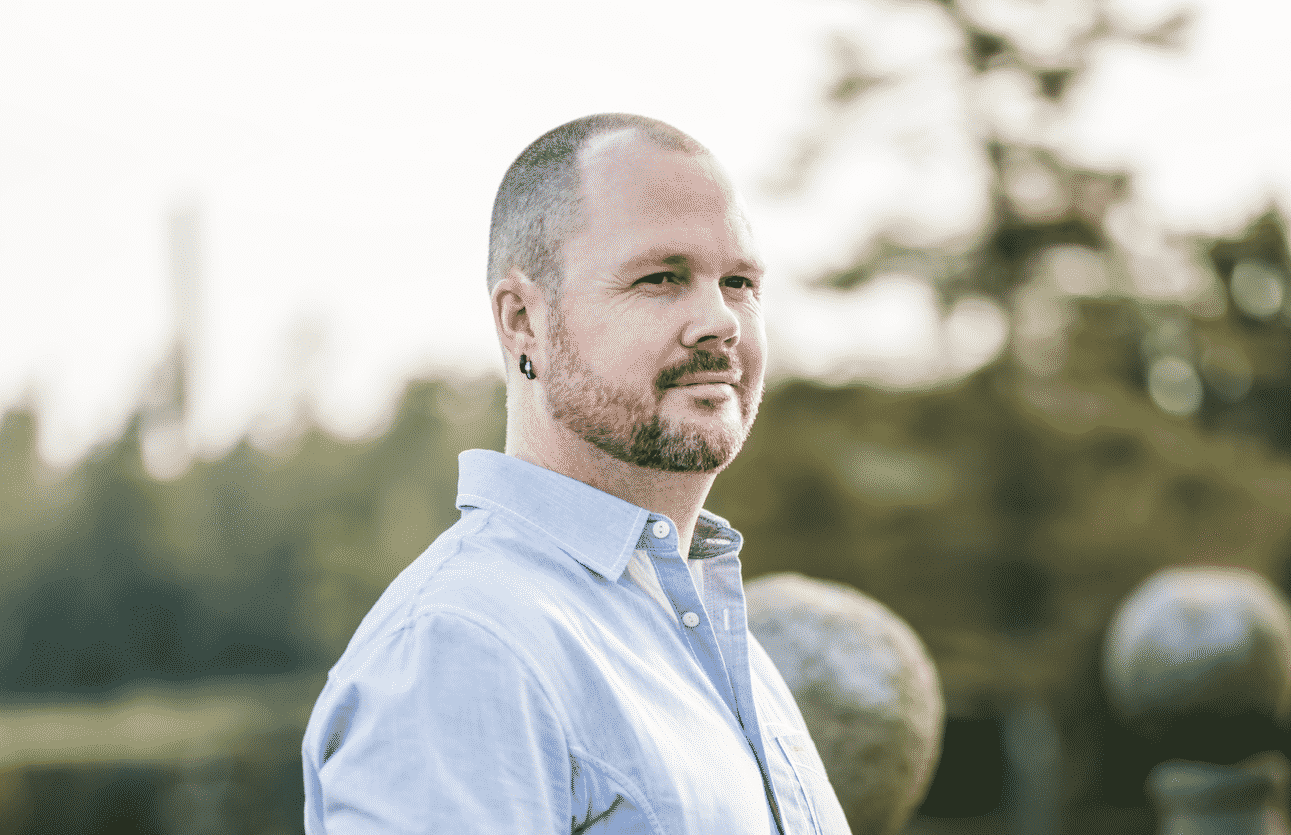Ben • • 9 min read
Habit Gardening: How to Use Strategy to Change Your Life the Smart Way

How many times have you started a new habit, hobby, or project with passionate motivation — only to find yourself basically giving it up two or three weeks later?
You go with your friend on a run, to their gym, or to a yoga class and you love it. You never exercise so you decide it’s time to get in shape.
You make a plan to do it everyday after work. Your plan goes well until that first exhausting day, when you get to your couch back home and don’t want to do anything.
You let that day slide, and then another day. You get discouraged. Soon enough your everyday routine becomes a maybe-once-or-twice-a-week thing…
You read the first couple chapters of a great book. You feel like you’re learning so much. Wouldn’t it be amazing to read all the time? You read every day until you finish that book, then you don’t pick another one up for three months….
It’s easy to write, make music, or create art when you’re feeling inspired. New ideas spark motivation to take action. But most of the time we’re not inspired. Most days are just average days. You never create anything significant if you don’t learn how to create when uninspired.
Are we doomed to cycles of motivation briefly making our lives awesome, followed by a lack thereof making most days boring? Can we ever actually make a habit stick?
Actually, we can absolutely escape this cycle! We have the power to create strong, lasting, effective habits for ourselves.
We’ve just got to take the usual advice about finding motivation and chuck it right out the window…
Forming Habits has Nothing to Do with Motivation
The thing about motivation is that it comes and goes. It’s transient. Temporary. You may feel like doing it now, and that’s great! But what about tomorrow, and the next day, and next week, and next month? Your level of motivation will be different.
Motivation is affected by how much sleep you got last night, what you ate for lunch, inspiring or discouraging conversation, the last YouTube video you watched, etc.
Setting up your environment and routine to regularly give you a motivation amp-up, and to avoid motivation drainers, can help a lot. Hiring a coach can help you stay inspired. Avoiding negative people is certainly a good move.
But we can never control everything. Motivation will naturally wax and wane. Circumstance will impact your mood. Relying on motivation alone is not sufficient for building habits.
Motivation might spark the interest for doing something new, but it will absolutely not hold up a long-term, sustained, dedicated, fruitful habit. What will do so is good strategy…
Habit formation is more about the proper placement of a new habit. Take this quote from BJ Fogg, Stanford University Professor and researcher of habits:
“If you plant the right seed in the right spot, it will grow without further coaxing. I believe this is the best metaphor for creating habits. The “right seed” is the tiny behavior that you choose. The “right spot” is the sequencing — what it comes after. The “coaxing” part is amping up motivation, which I think has nothing to do with creating habits. In fact, focusing on motivation as the key to habits is exactly wrong. Let me be more explicit: If you pick the right small behavior and sequence it right, then you won’t have to motivate yourself to have it grow. It will just happen naturally, like a good seed planted in a good spot.”
— BJ Fogg
Where, in your routine, are you trying to place the new habit?
If you aren’t being purposeful about placement then you’ll waste a lot of good seeds. If you just throw seeds around in a random pile of dirt, you leave it up to luck to hopefully give you a couple decent plants.
But if you get some robust soil, learn about the spacing each plant will need, which plants should be next to each other and which separated, et cetera, then your efforts will be rewarded.
The same goes for habits. There are times of day when we have more energy and times when we are more fatigued. There are activities we do routinely that either wear us out or make us feel good. Things we look forward to and things we dread.
If you want to solidify a new habit, you’ve got to find where it should fit so that it can thrive.
When & Where to Place Your Habit
There are three important factors to consider when placing a new habit. The first is something I call motivational timing, the second is using a habit trigger, and the third is rewarding yourself.
Motivational Timing
Motivational timing is about identifying when you are naturally most motivated and energized. As I said, motivation waxes and wanes, and our daily routines affect our level of motivation.
When I first started practicing yoga I tried to do it every day after work. I was incredibly inconsistent for the first several months because this timing was all wrong.
When I get home from work I don’t want to do anything. Especially anything physical. I am naturally demotivated after the workday. A new habit stands no chance against my post-work fatigue.
My yoga practice became consistent when I started doing it first thing in the morning. Some days I sleep in, and only do one or two poses. Other days I get up extra early for an hour-long practice.
But I always do my yoga. My morning energy level is much better than my just-got-home-from-work energy level, and the morning is a great time for me to practice new habits.
Nowadays my after-work habit is a “napitation.” I lie down and practice mindfulness of breath for 20 minutes, sometimes letting myself fall asleep. This works extremely well because it’s exactly what I want to do after removing snowy boots, putting my bag down, and taking a piss.
Then, conveniently, after my short nap I feel like doing something physical! So now my exercise routine follows my napitation.
If you can decode your own motivational cycles, seeing when you naturally feel up or down, then you’ll be much better informed about where to place your new habits.
Using a Trigger
For a brand new habit, it’s best to link it with a “trigger” that’s already a part of your daily routine.
Pick an old habit that you’re guaranteed to do every day, and associate your new habit with the old. Place your new habit immediately after the trigger.
Instead of drumming up willpower at some random point each day to do this new thing, just make it a natural part of your routine that follows X, Y, or Z.
Haphazardly trying to find time and energy for your new habit won’t work. You can’t do it on-the-fly. You’ve got to purposefully plan and place your new habit.
When I first wanted to make writing a habit I associated it with drinking my morning coffee. I would already drink coffee every day, so that was my chosen “trigger”. I would make my coffee, and then I wouldn’t allow myself to sip it until I had written one word. Then I would drink the coffee as I write.
This system worked wonders because I always wanted my morning coffee. All I had to do was write one word; easy enough to get that sip. But to do that I needed to be in my writing chair, settled down with Microsoft Word open. Once I was in that position it just made sense to keep writing for a while.
Plus, I associated writing with coffee — my first love. It was a win-win for creating positive associations with my new habit.
Find your trigger. Something you already do every day. You need a guaranteed reminder. Then stick to your new habit after every time the trigger occurs. This will create a strong bond between the old trigger and your new behavior.
Eventually you won’t have to think about it. After a while your new habit will just be another part of your routine.
Treat Yo’ Self
Always follow your habit with a reward.
Definitely avoid anything that’s strenuous, difficult, boring, tedious, or otherwise unenjoyable right after the new habit. You will come to associate the habit with the unpleasantness of said shitty thing, killing your attempt before it even had a chance.
Instead, do something fun! Want to get more exercise? Enjoy a snack after every workout. Want to do creative work? Let yourself veg out in front of the TV or go for a nice walk after a block of productivity.
Make it so the completion of your new habit comes to be associated with the reward you enjoy after.
When a behavior becomes neurologically associated with a reward, the craving for that reward merges with a new craving for the behavior itself.
Not only do we look forward to the reward, but we also look forward to doing whatever thing happens before that reward. When a habit and something pleasant happen in sequence with each other our brains stop distinguishing between the habit and the reward.
In our mind they become one and the same, making us want to do the habit for literally the same neurological reason we want to enjoy the reward. This makes a new habit truly fucking solid.
Always make the reward deliberately planned, concrete, and easy to do consistently. Making it the same reward every time, and making it easily accessible immediately after the habit, will help ensure your success. Enjoy your reward every time to quickly make a strong association with doing your new habit.
Find the right timing, trigger, and reward. Be absolutely deliberate about what you’re doing before and after the new habit. The activities surrounding your new habit are its environment, in the same way that soil and climate are part of the environment surrounding a seed. Put your seeds in an environment that will nurture them.
A Short Note on The Importance of Commitment
I’m extra confident about the effectiveness of placing your new habit in the right spot. I’ve experienced the difference myself. But with that said, here’s a way you can still screw this up:
Make a plan, but don’t stick to it.
Wherever your habit goes; whichever trigger you choose to precede it and whichever reward you choose for a follow-up, make damn sure you stick to the plan.
It’s way too easy to tell yourself: “I’ll exercise every day right when I get home, and eat a snack after”, and then when the moment comes proceed to not exercise but still eat the snack and watch tv for an hour. I’ve definitely done that. You fail to establish the new habit when you lack commitment like this.
If you don’t exercise at all, don’t eat that snack. Don’t lie down. Don’t reward yourself without earning it.
At some point, some level of willpower is involved. You have to do the thing.
Here’s a quick tip on making that easier: always do the thing at least a tiny bit, even if not as much as you planned.
Feel good about small wins. If you plan to exercise for an hour at the gym, but just truly don’t want to do it, it’s way better to do ten minutes at home than to do nothing at all.
In the long-term, the formation of these habits relies on consistency in a routine. Epic feats of mounting motivation don’t build habits. Taking an action over and over and over again does.
If something comes up and you don’t have time for a mile-long jog, just do 5 quick sprints. If you’re exhausted from the workday and formatting your new blog for an hour sounds way less appealing than a beer on the couch, just commit to 10 minutes of work and let yourself chill after that.
Not matter what, commit to keeping the thing a part of your routine, even if it means decreasing the volume you do today. The game of habit formation is a marathon, not a sprint.
Plant Your Habits in Good Soil
Just like a seed, habits need good soil.
Environmental conditions either help or hinder growth. To grow a new habit you need to create the right conditions in the environment of your life.
Find the sweet spot in your daily routine. Figure out how your mood fluctuates during the day, and look for the mood that will predispose you to doing your new habit.
Decide on something that will act as a “trigger” for your habit. What will be the best cue for the new behavior?
Always reward yourself afterward. Pick something fun and easy to do. Create a positive association between completing your habit and enjoying the reward.
The right strategy and structure makes a new habit way easier. You won’t need gallons upon gallons of motivation and willpower. The new habit will feel like a natural part of your routine.
If you’re ready to commit, write down your plan and share it with a comment. Let the world know what your garden will look like.
If you appreciated this article, you’ll probably love these too:








